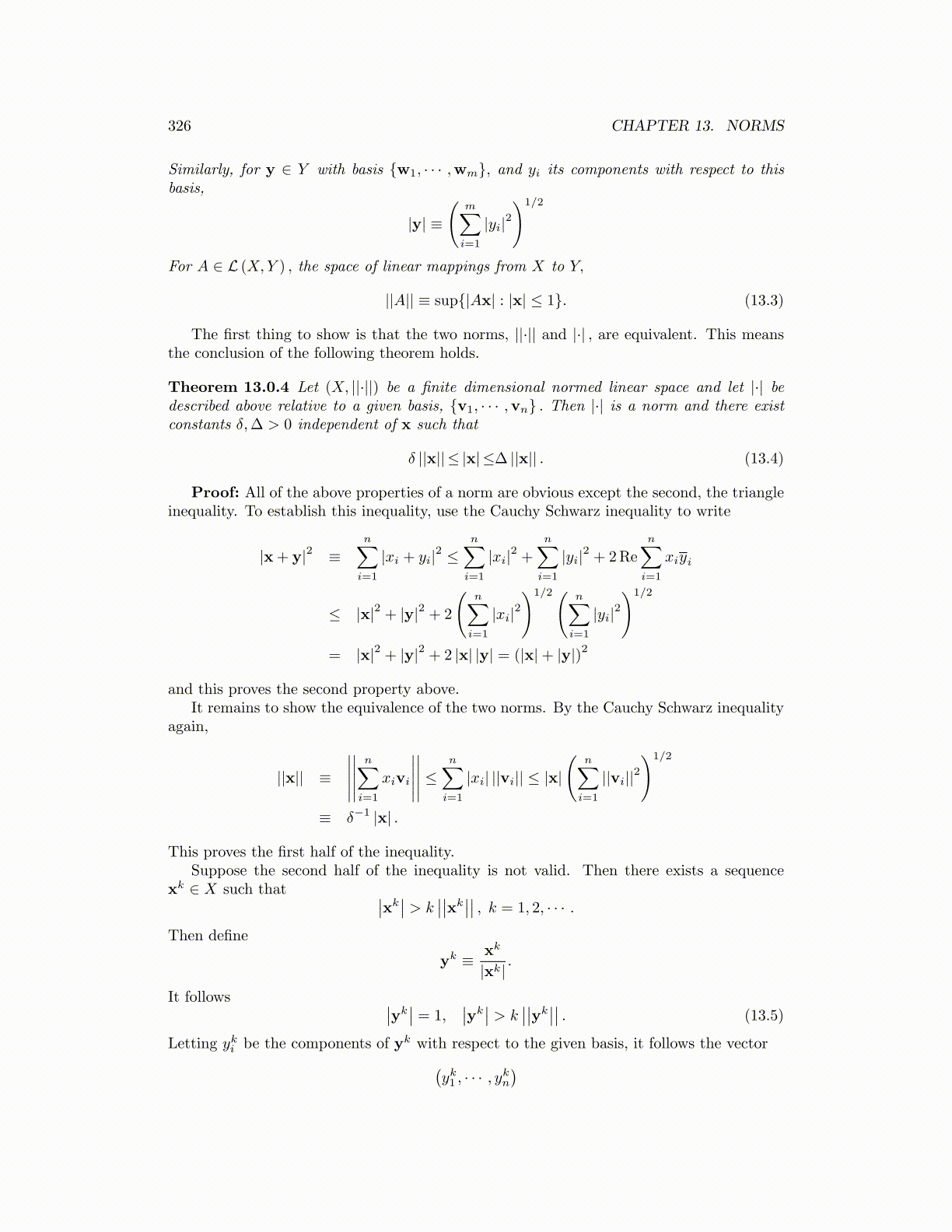
326 CHAPTER 13. NORMS
Similarly, for y ∈ Y with basis {w1, · · · ,wm}, and yi its components with respect to thisbasis,
|y| ≡
(m∑i=1
|yi|2)1/2
For A ∈ L (X,Y ) , the space of linear mappings from X to Y,
||A|| ≡ sup{|Ax| : |x| ≤ 1}. (13.3)
The first thing to show is that the two norms, ||·|| and |·| , are equivalent. This meansthe conclusion of the following theorem holds.
Theorem 13.0.4 Let (X, ||·||) be a finite dimensional normed linear space and let |·| bedescribed above relative to a given basis, {v1, · · · ,vn} . Then |·| is a norm and there existconstants δ,∆ > 0 independent of x such that
δ ||x|| ≤ |x| ≤∆ ||x|| . (13.4)
Proof: All of the above properties of a norm are obvious except the second, the triangleinequality. To establish this inequality, use the Cauchy Schwarz inequality to write
|x+ y|2 ≡n∑
i=1
|xi + yi|2 ≤n∑
i=1
|xi|2 +n∑
i=1
|yi|2 + 2Re
n∑i=1
xiyi
≤ |x|2 + |y|2 + 2
(n∑
i=1
|xi|2)1/2( n∑
i=1
|yi|2)1/2
= |x|2 + |y|2 + 2 |x| |y| = (|x|+ |y|)2
and this proves the second property above.It remains to show the equivalence of the two norms. By the Cauchy Schwarz inequality
again,
||x|| ≡
∣∣∣∣∣∣∣∣∣∣
n∑i=1
xivi
∣∣∣∣∣∣∣∣∣∣ ≤
n∑i=1
|xi| ||vi|| ≤ |x|
(n∑
i=1
||vi||2)1/2
≡ δ−1 |x| .
This proves the first half of the inequality.Suppose the second half of the inequality is not valid. Then there exists a sequence
xk ∈ X such that ∣∣xk∣∣ > k
∣∣∣∣xk∣∣∣∣ , k = 1, 2, · · · .
Then define
yk ≡ xk
|xk|.
It follows ∣∣yk∣∣ = 1,
∣∣yk∣∣ > k
∣∣∣∣yk∣∣∣∣ . (13.5)
Letting yki be the components of yk with respect to the given basis, it follows the vector(yk1 , · · · , ykn
)